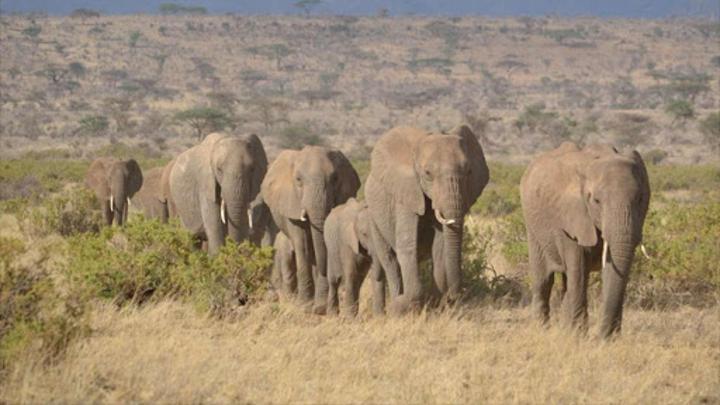Africa-Press – Malawi. A new study now suggests that the restoration of at least 30 per cent of critical wildlife habitat areas that have been taken up by farming activities is crucial in preventing extinction of iconic species.
A study dubbed ‘Global priority areas for ecosystem restoration’ which is published in Nature, shows that the restoration efforts would prevent more than 70 per cent of projected extinctions of mammals, birds and amphibians.
Experts argue that healthy terrestrial and marine ecosystems are not only vital for climate regulation, both in mitigation and adaptation but also the survival of species. The global community has set targets to ensure the planet and the wellbeing of human beings and wildlife thrive.
Among the 23 targets to be achieved by 2030 include 30 per cent conservation of land, sea and inland waters, 30 per cent restoration of degraded ecosystems, halving the introduction of invasive species, and $500 billion a year reduction in harmful subsidies.
“Restoring just half of these (15% of priority areas) could avoid over 60 per cent of expected extinctions while sequestering 30 per cent of the total carbon dioxide increase,” the report says.
The findings come ahead of the UN Decade on Ecosystem Restoration (2021-30), as the global community is encouraged to scale up restoration efforts worldwide to tackle the twin biodiversity and climate crises.
Kenya’s National Wildlife Strategy 2030 shows a 68 per cent loss of wildlife populations in savanna ecosystems from 1977 to 2016. There has been a 40 per cent decline in freshwater wetland ecosystems.
The strategy also shows a 7.4 per cent loss of forest cover between 1990 and 2014; a nine per cent decline in insect pollinators; a 74 per cent loss of coral reefs by 1999; and a 90 per cent decrease in Mt Kenya snow cap cover due to climate change.
Other challenges threatening to wipe out the country’s iconic species include habitat loss and degradation; loss of ecosystem connectivity; climate change; human-wildlife conflicts; diseases and loss of genetic viability; and poaching for trophies and bush meat.
Infrastructural development and human encroachment into wildlife areas among others have also been responsible. To try and reverse some of the threats facing wildlife, the Wildlife Research and Training Institute (WRTI) convened the first Wildlife Scientific Conference between September 26-28 at Lake Naivasha Resort.
The conference brought together wildlife scientists and government and non-government wildlife conservationists under the theme: Use of Wildlife Science for enhanced biodiversity conservation and Improved Livelihoods.
WRTI director Dr Patrick Omondi said plans are in place to have an integrated national wildlife database as the state has provided a seed capital of Sh23 million.
“The challenge we currently have is that we have information that is scattered. We have the best studies undertaken by our Master’s students, PhD students and those which have already been published in peer-reviewed journals,” Omondi said.
“We will by December this year have in place a framework of the database and data sharing protocols with managers of national parks and reserves, community conservancies.”
Omondi urged scientists to present their findings in a simple language and coherent manner that communicates to policy and decision-makers as well as managers. During the deliberations, it became apparent that all the past evidence generated by scientists was not informing policies in any way.
It also became apparent that the state has not put enough money into research and development despite committing to putting 2.5 per cent of the GDP on research and development. Kenya is currently putting 0.8 per cent of the GDP into research and development, a move that has stifled the sector.
As part of the wider plans to salvage the worrying trends in the decline of both wildlife and plants, a team of experts known as the International Union for Conservation of Nature (IUCN) Kenyan Species Specialist Group was unveiled.
The group comprises officials from the Wildlife Research and Training Institute, the Kenya Wildlife Service, the National Museums of Kenya and other partners.
The group will conduct a national red list assessment for priority wildlife and other crucial species. Dr Omondi said the group will help profile some of the wildlife species such as rhone antelope, which are listed as least concern.
“We have less than 30 rhone antelopes in the country. We also have 51 individuals of sable antelope in Kwale. We need to profile them,” he said.
The specialist group will help complete the global Red List assessment for endemic freshwater fish, invertebrates, mammals, reptiles, amphibians, plants and selected marine species not yet on the list.
The IUCN’s Red List of Threatened Species has evolved to become the world’s most comprehensive information source on the global extinction risk status of animal, fungus and plant species.
The Red List, which was established in 1964, is a powerful tool to inform and catalyse action for biodiversity conservation and policy change, critical to protecting the natural resources needed to survive.
Currently, there are more than 150,300 species on the IUCN Red List, with more than 42,100 species threatened with extinction, including 41 per cent of amphibians, 37 per cent of sharks and rays, and 36 per cent of reef-building corals, 34 per cent of conifers, 27 per cent of mammals and 13 per cent of birds.
The IUCN is a membership union composed of both government and civil society organisations harnessing the experience, resources and reach of its more than 1,400 member organisations and the input of 15,000 experts.
It is the global authority on the status of the natural world and the measures needed to safeguard it. Other resolutions agreed upon during the conference include the strengthening of multi-disciplinary, multi-sectoral and multi-institutional approaches to wildlife health challenges through one health approach.
Others are harnessing technology, harmonising methods used to count wildlife, a one-stop shop to streamline and expedite the research process, and international cooperation and partnerships.
Source: The Star
For More News And Analysis About Malawi Follow Africa-Press






